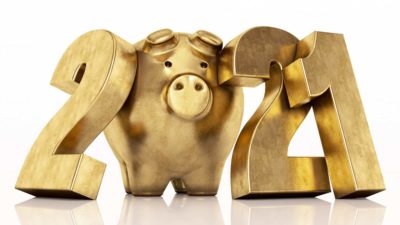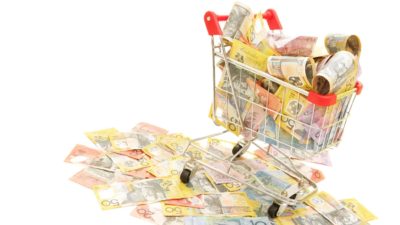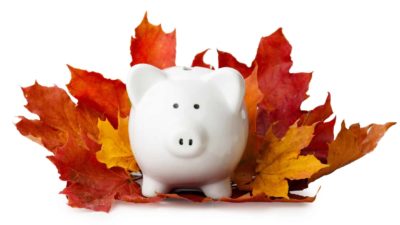It's hard to go wrong buying shares in solid, high yielding companies. Scott Phillips has identified five large-cap companies with histories of strong and growing dividends.
Does your portfolio have a strong foundation?
Every building needs a foundation, a base to support growth and to withstand the occasional storms which can bring down the poorly built and unprepared.
Your share portfolio needs a foundation, too. For most investors, that foundation is large caps – stocks of the biggest companies that make up the ASX 20, 50 and 100 indices.
If you're investing for the long term, like most of us, you need some large-cap stocks, plain and simple. I'll explain below — and give you some good ideas to get started.
Stocks for the rest of your life
There's a solid case for having large caps as the cornerstone of your portfolio – at all stages of your life. The established revenue streams, big brands, easy access to capital, and broad reach of the best large-cap companies are important advantages that help offset the criticism many investors level at large caps: they don't grow as much or as quickly as the best smaller stocks.
It's true that large-cap stocks are, generally speaking, less volatile than stocks of smaller companies. That means they don't go up as dramatically during bull markets — but it also means that they don't come crashing down as hard. That's because a lot of big, relatively conservative investors like managed funds and superannuation funds own large caps, and those investors tend not to make big moves when the markets shift.
Dividends underpin returns
And with many of these stocks – their steady, regular dividend payments make them appealing investments no matter what the market's doing.
That relative stability during Mr. Market's rough patches is a valuable thing to have, as many have realised in recent years — and it's a good thing to hang on to even when you're in retirement.
But let's be really clear about this: Owning large caps doesn't mean you're giving up growth. One of my favourite examples of this right now is Woolworths (ASX: WOW). Woolworths is a boring, low-growth business, right?
Wrong. In fact, if you count reinvested dividends (and you should), Woolworths has almost tripled over the last decade — a period when the S&P/ASX 200 was up just 25% — and it's poised for even more growth. Why? Because it's expanding into new categories, growing same-store sales and continuing to bring costs down.
Finding the right large caps is the key
You could do much worse than buying Woolworths today — it's a great example that shows buying large caps doesn't mean you're giving up growth.
One of the keys to that growth — with Woolworths and in general — is dividends. Sure, a 3% or 4% dividend might not sound like all that much, but consider this: A 3% dividend that grows steadily at a 6% rate over time, reinvested to buy additional shares of the stock, can give you 8% average annual returns or more over the long term even if the stock price doesn't go up at all, thanks to the power of compound growth.
That can carry your portfolio nicely through an extended bear market. And after you retire, you can take those dividends as extra income.
4 more for the long term
Buying stocks with a long history of raising their dividends is one way to ensure that your portfolio has a solid foundation. Stocks like the following:
- Washington H. Soul Pattinson (ASX: SOL) – a company that has been around for decades and is run by managers with most of their wealth in the company… and which kept paying dividends right through the Great Depression.
- Coca-Cola Amatil (ASX: CCL), which is fast becoming Australia's premier drinks company across soft drinks, juices and alcoholic beverages – and with a flagship brand that is one of the world's strongest.
- BHP Billiton (ASX: BHP) benefits from both its current resource base, and its scale and management expertise. If the boom really is stronger for longer, BHP will benefit. The company's diversity and balance sheet strength are key defences should the bulls be wrong.
- Westfield Group (ASX: WDC). The odd one out in this list – the company had to reset its dividends in the wake the GFC – Westfield is now on a sustainable dividend footing and is the undisputed leader among shopping centre landlords, both here and overseas
Foolish take-away
Most of these companies have histories of strong and growing dividends. Even those that don't – like Westfield – have learned their lessons, and are positioned to be winning in their markets for many years to come.
Are you looking for more quality stock ideas? Motley Fool readers can click here to request a new free report titled The Motley Fool's Top Stock For 2012.
More reading:
- Beat the lawyers at their own game
- Value investing wisdom with a margin of safety
- Ten American shares you could buy today
Scott Phillips is The Motley Fool's feature columnist. Scott owns shares in Woolworths, Soul Pattinson, Coca-Cola Amatil and Westfield Group. The Motley Fool's purpose is to educate, amuse and enrich investors. This article contains general investment advice only (under AFSL 400691). Authorised by Bruce Jackson.
A version of this article, originally written by John Rosevear, appeared on fool.com. It has been updated.








